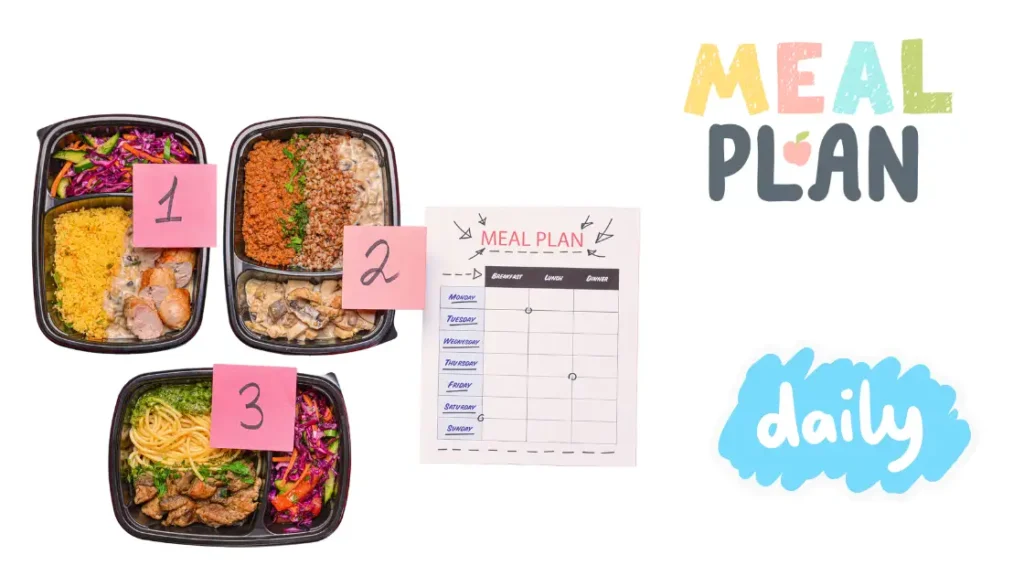Getting a slim body isn’t about crash dieting or starving yourself. It’s about making smart, healthy food choices and developing sustainable eating habits. This comprehensive guide will walk you through everything you need to know about creating and maintaining a healthy diet plan for a slimmer body.
1. Understanding the Science Behind Weight Loss?

Your body weight is primarily controlled by the balance between calories consumed and calories burned. To lose weight healthily, create a modest caloric deficit of 500-750 calories per day, which leads to a sustainable weight loss of 1-1.5 pounds per week. Avoid extreme calorie restriction as it can slow metabolism. Instead, focus on nutrient-dense foods that keep you satisfied.
Your basal metabolic rate (BMR) accounts for 60-70% of daily calorie burn, while physical activity uses 20-30%, and digestion uses about 10%. Building muscle through strength training can increase your BMR, helping you burn more calories even at rest.
2. The Foundation of a Slim Body Diet

Meal Timing and Frequency
Start your day with breakfast within one hour of waking to kickstart your metabolism and prevent mid-morning cravings. Eat every 3-4 hours, including three main meals and two nutritious snacks. Have your last meal 2-3 hours before bedtime. Consistent timing helps regulate hunger hormones and maintain stable blood sugar levels.
Portion Control Made Simple
Think of your plate as a clock: fill half (6 hours) with vegetables, a quarter (3 hours) with lean protein, and the remaining quarter with complex carbohydrates. For proteins, aim for a palm-sized portion; for carbohydrates, use a cupped hand; and for healthy fats, stick to a thumb-sized portion.
3. Essential Foods for a Slim Body

Proteins (25-30% of daily calories)
Choose lean proteins like chicken breast, fish, turkey, eggs, Greek yogurt, lentils, and tofu. A proper serving of protein helps maintain muscle mass while keeping you feeling full longer.
Vegetables (40-50% of plate volume)
Focus on non-starchy vegetables like leafy greens, broccoli, bell peppers, and cucumber. These provide essential nutrients while keeping calorie intake low. Limit starchy vegetables like potatoes and corn to smaller portions.
Smart Carbohydrates (40-45% of daily calories)
Opt for complex carbohydrates such as oatmeal, quinoa, brown rice, and sweet potatoes. These provide sustained energy and necessary fiber. Include 2-3 servings of fruit daily, preferably berries and apples over tropical fruits.
Healthy Fats (25-30% of daily calories)
Include sources like avocados, nuts, seeds, olive oil, and fatty fish. These fats are essential for hormone production and nutrient absorption. Remember that fats are calorie-dense, so measure portions carefully.
4. Daily Meal Plan Template!

Breakfast
Choose either:
- Protein-rich option: Eggs with vegetables and whole-grain toast
- Carb-balanced option: Oatmeal with protein powder and berries
Lunch
Focus on:
- Lean protein (chicken, fish, or legumes)
- Abundant vegetables
- Small portion of complex carbs
- Healthy fat source
Dinner
Keep it light with:
- Lean protein
- Steamed or roasted vegetables
- Small portion of complex carbs
- Herbs and spices for flavor
Snacks
Select one mid-morning and one mid-afternoon:
- Greek yogurt with berries
- Apple with nut butter
- Vegetable sticks with hummus
- Small handful of nuts
5. Hydration and Beverages!

Drink water throughout the day, aiming for 8-10 glasses minimum. Add two glasses for every hour of exercise. Green tea and black coffee can be included in moderation. Avoid sodas, sweetened beverages, and limit alcohol consumption.
Lifestyle Integration
Meal Prep
Prepare meals in advance to ensure healthy choices are always available. Spend a few hours each weekend planning and preparing meals for the week ahead. Store meals in portion-controlled containers for easy grab-and-go options.
Exercise Integration
Combine this diet plan with regular physical activity:
- 150 minutes of moderate cardio weekly
- Strength training 2-3 times weekly
- Daily movement like walking or stretching
Sleep and Stress Management
Prioritize 7-9 hours of quality sleep each night. Maintain a regular sleep schedule and practice stress reduction techniques. Avoid eating late at night, as this can interfere with both sleep quality and weight loss.
6. Progress Tracking!

Monitor your progress through:
- Weekly weigh-ins at the same time of day
- Monthly body measurements
- Progress photos
- Energy levels and mood
- Clothing fit
7. Overcoming Common Challenges!

Managing Hunger
Stay ahead of hunger by eating protein at every meal, including plenty of fiber-rich foods, and staying well-hydrated. Keep healthy snacks available for unexpected hunger.
Breaking Plateaus
When progress stalls, try:
- Recalculating calorie needs
- Changing up exercise routine
- Increasing protein intake
- Adjusting meal timing
- Getting more sleep
Remember that sustainable weight loss takes time and consistency. Focus on developing healthy habits rather than seeking quick fixes. Always consult healthcare professionals before starting any new diet plan, especially if you have underlying health conditions.
1 thought on “Your Complete 2024 Guide to Smart Eating and Body Transformation!”